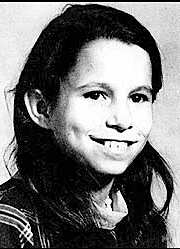June 7, 2023

On Sun., June 10, 1973, Teresa Margaret O’Leary, age 15, left Boston City Hospital, where she had been treated for the damages of the latest severe beating by her father over a domestic incident, and went back to her home at 67 Clayton Street in the Fields Corner neighborhood, where she expected to rejoin her family – her father, George, her mother, Thelma, and her siblings, George Jr., 13, Colleen, 11, Kathleen, 10, and Michael and Melinda, 8-year-old-twins – for Sunday dinner. She opened the unlocked front door and stepped into a scene that defines the word horrific: The bloodied bodies of her mother, brothers and sisters, bullet wounds in their heads, her father a suicide, investigations later showed, by way of sleeping pills and an array of alcoholic intakes, and the remains of the family’s German Shepherds.
The shock of the tragedy deeply unsettled the Clayton Street neighborhood, its schools, its church congregations, law enforcement, and the city beyond the crime scene as local media, working without the levers of the internet, tried to unravel what led up to George O’Leary’s decision to annihilate his family.
For Teresa, the discovery was the first step on a harrowing journey to her death 30 years later in a rehabilitation facility, an odyssey rife with setbacks, mentally, physically, and emotionally, as she tried and failed countless times to recover the sense that people cared for her that she lost when her father started shooting some 48 hours before she pushed open that door.
•••
The two-story house that George and Thelma O’Leary rented – and struggled to maintain – was modest in appearance and too small for eight people to live in comfortably. In the latter respect, tight family quarters were a way of life for tens of thousands of Dorchester residents, many of them living in three-decker apartments with two bedrooms, a dining room (which often served as a third bedroom), a living room, kitchen, toilet, small walk-in pantry, and front and back porches, the latter a good place to hang laundry to dry.
The O’Leary children were regular participants in ordinary street play in their neighborhood a few blocks east of Fields Corner. Having fun outside the house was, per contemporaneous accounts, in marked contrast to what was going on inside their house for the O’Leary children and their mother.
George Sr. had grown up in the neighborhood with a father who bullied him regularly. He left school as a ninth grader and joined the Army. The six-foot-three, two hundred-pound enlistee didn’t finish boot camp, but he later earned his stripes and fought in Korea, where he was awarded a Purple Heart. During that second tour of duty, he met Thelma Turner when he was stationed in Virginia and marriage followed in short order.
After his discharge, O’Leary tried unsuccessfully to become a Boston Police officer, then found work as an armed security guard as he and Thelma went about making a family even as George reportedly grew increasingly belligerent toward her and their children.
The story of the massacre on Clayton Street burst onto the scene with the broadcast media first to give the first gruesome reports on Sunday and the print media, most prominently the Boston Globe and Boston Herald, coming in on Monday with disaster-size headlines, the gritty details of the slayings and the suicide, and reports on the family’s life experiences before June 8, 1973.

The photo lineup at right of George O’Leary and five of his victims, which ran in the Boston Sunday Globe of June 17, 1973, is missing a picture of George O’Leary Jr.
Bill O’Neill, now a Quincy resident, was an eighth-grade classmate of George O’Leary Jr., at the-then Grover Cleveland School in Fields Corner. He recalls hearing the words “O’Leary” and “family murders” and “Clayton Street” on WBZ-TV’s Ch. 4 on Sun., June 10, and not knowing what to make of things. “I was 13,” he said, “and it seemed so senseless.”
About young George, O’Neill said, “I wasn’t a close friend, but I saw him all the time. We shared gym class in the 7th grade and homeroom in the 8th grade. He was quiet kid, and a nice guy. On Friday the 8th, our class had gone on a field trip to Georges Island. George was there but Teresa was not because her father had beaten her and she had to be hospitalized on Thursday night. Later on Friday, George Sr. murdered his namesake son. The memories of those days spring up with me every June, and every time I hear of yet another mass killing on the news.”
He added that he felt strongly that something should be written or said publicly on the 50th anniversary “because the family just should not just be forgotten.”
•••
For the media, stories like the O’Leary tragedy have a shelf life, depending on what flows from reporting and analysis after the fact. In 2023, local coverage of such events ranges far and wide, with considerations not only about what happened but also about mental health and how that element fit into the equation of accountability, about missing interventions by relatives, neighbors, clergy, teachers, school administrators – Bill O’Neill told the Reporter that “on more than one occasion George Sr. entered the school and removed Teresa and/or George Jr. from their classroom, including one class that George Jr. and I were in. I do not know if the school officials contacted the police or other agencies about these incidents” – and social agencies that might have prevented the outcome, and expert opinion about what drives a person like George O’Leary to destroy everything that presumably meant something to him.
In 1973, absent the Greek choir that social media provides today to expand the length of interest in stories like the O’Leary calamity, the coverage in The Globe had its beginning, middle, and end as a significant news story within the framework of a week’s time, starting on Page One on Monday under a streamer headline and ending with a wrap-up story on Page 62 in the June 17 Sunday Globe. The story carried with it a lot of pathos for interested readers, but it was essentially a straight-forward account of how a troubled man went berserk and killed everyone in his family but a 15-year-old daughter, leaving her life story to run its sad course and be told at a later time.
The reporting during the week did uncover interesting and disturbing details:
• Thelma had filed assault charges against George the day of her murder but court proceedings on the case had been postponed.
• A neighbor, requesting anonymity, mentioned to reporters that O’Leary had told her that his “family is a noose around my neck and someday I am going to kill them all.”
• The orphaned Teresa had family relatives in Massachusetts who told authorities and reporters that they couldn’t afford to take her into their households.
• A final indignity: The murderer and the murdered were buried, courtesy of nine Dorchester funeral directors, in unmarked graves provided by the St. Vincent de Paul Society at St. Joseph’s Cemetery in West Roxbury. Years later, and up to 2021, memorials and scripts have been added to the gravesites.
•••
Friends and schoolmates of the O’Leary children from age 8 to roughly age 15 and the adults in their families were left to reckon with the neighborhood catastrophe the best they could, but 40 and 50 years later, some of the youngsters-turned-adults gave voice to their memories of June 1973 in comments they routed to a website entitled, awkwardly, Celebrate Boston.com., several of which are excerpted below.
• “I remember this horrible tragedy. I went to school for a short time with Teresa and George. I would talk with Teresa and of course we had one thing in common: our name was the same. … RIP, dear Teresa. I’m sure you were greeted in Heaven by your mom and siblings with open Angel wings.”
Terry (10-9-2019)
• “My family had moved away from Fields Corner two years before this awful tragedy. I went to school with George Jr. at Rochambeau School. He was always well dressed and well mannered. My heart goes out to Teresa and her life-long struggle with such a selfish horrible crime that her cowardly father committed. May her siblings and mom rest in peace.”
John J. (6-2-2016)
• “I lived on Park Street for a brief time. I just remember catching grasshoppers with the O’Learys and then they were gone. My Nana took me to the funeral. I was numb. I still picture the white coffins in St. Ambrose, I was never the same.”
Valerie O. (5-26-2013)
• “when i was a dorchester kid from fields corner i also lived on park st and i was best friends to the daughter and went to school with her but one night she wanted me to spend the night but for some reason i got in trouble with my mom and i was grounded and the next morning on my way to school i heard the news on tv and saw them taking out the bodies and i wasn’t sure how i felt but sad, thankful that i was not killed that night with that family but it stayed with me all my life which i am now 50 years old and live in Maine.”
Christine B. (7-15-2012)
• “Thank you for remembering the good times in their lives & the prayers. My Aunt Thelma was a beautiful woman and loved her family. I know she is in a better place now. I’m so happy my cousin Teresa is finally at peace and with the rest of her family.
Candace T. (3-30-2014)
•••
There is a sequel to the story of the O’Leary family murders and the accompanying suicide, and it’s tragic through and through, save for the last moments of Teresa O’Leary’s life in 2003. A year after her death, Boston Globe reporter David Abel gave her life the overdue attention it deserved in a masterly, 4,000-word account entitled “Teresa, Interrupted” that was published in The Boston Globe Magazine on Sunday, July 18, 2004.
Following is his summary paragraph laying out the essence of the story he is about to tell.
“This is the story of a child’s worst nightmare coming true, about a girl who lost everything, was abandoned by her relatives, robbed of her sanity, and sentenced to a life in mental hospitals. It’s a rare glimpse inside the halls of the mental health system and of one notoriously challenging patient, who resisted treatment, escaped confinement, and often required restraint in straitjackets. But it’s also the story of a survivor who, after decades behind locked doors, found freedom, about the light that penetrated the darkness of one of the city’s most gruesome murder-suicides.”
David Abel’s deeply drawn, empathetic look at Dorchester-born Teresa O’Leary’s life story is available online in the Boston Globe’s archive, and I recommend it to those who have read this recapitulation of her family’s destruction.


